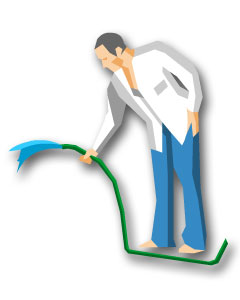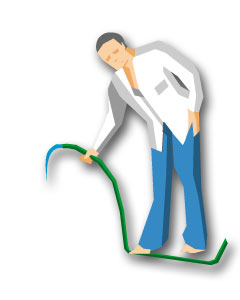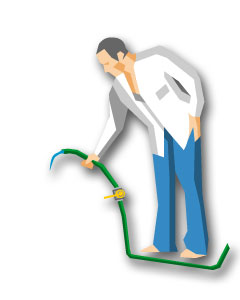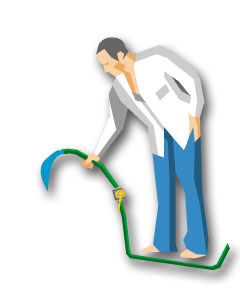If we reduce the thickness of the wires in our circuitA collection of wires and electric components connected together in such a way that electric current can flow through them., we make it more difficult for the electric currentElectric current is a flow of electric charges (electrons). to flow.
It's a bit like a pipe carrying water. If we make the pipe narrower, less water can flow because there's more resistance.
Run your mouse over the picture to see what happens when the man puts his foot on the hose (increasing the resistance).
By standing on the hose, the man is increasing the resistance to the water flowing through the pipe so the water flow is reduced.
Resistance
Components like motors and bulbs contain very thin wires so if we include them in a circuit, the circuit resistance increases.
Use Circuit Builder to explore what happens if you add more bulbs to a series circuit.
Variable resistance
Variable resistance is a bit like having a tap on the hose so the amount of water flowing can easily be adjusted.
Move your mouse over the picture to see what happens when the tap is opened (reducing the resistance).
If we have thin wires and components like bulbs and motors in our circuit, we increase the circuit resistance and so less current flows.
But if we want to have greater control over the current flowing round a circuit, we can connect a variable resistor in series with other components.
This is the circuit diagram symbol for a variable resistor:
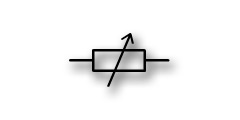
Use Circuit Builder to explore how a variable resistor changes the current flowing in a circuit.



